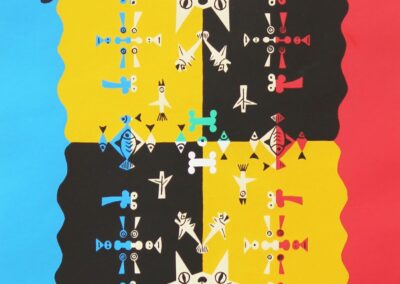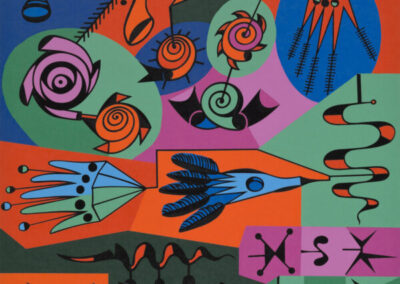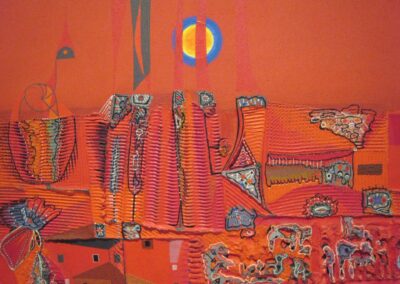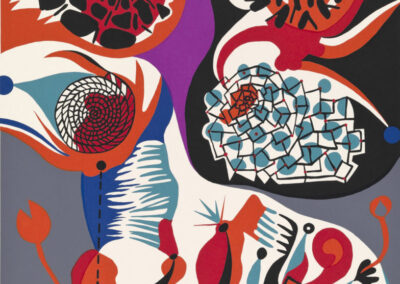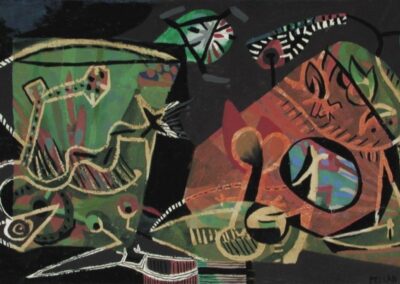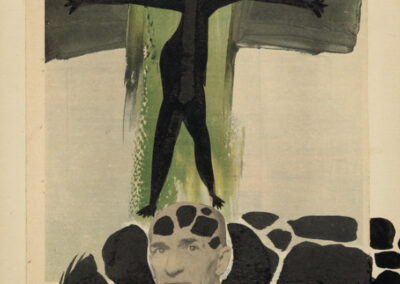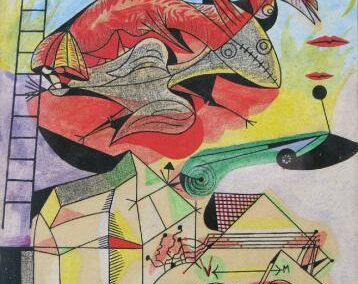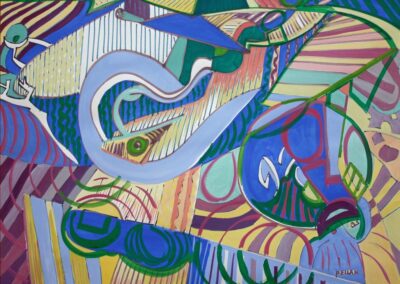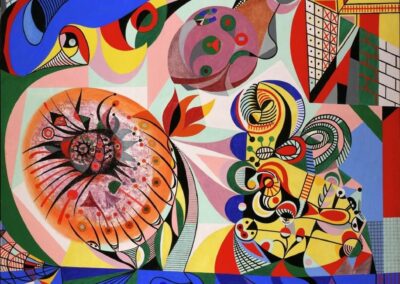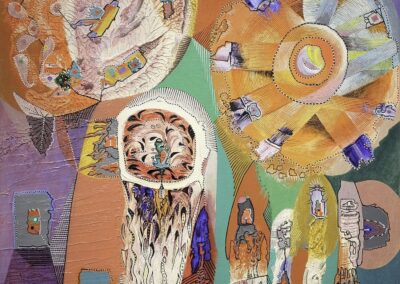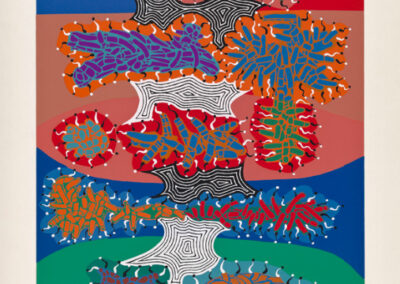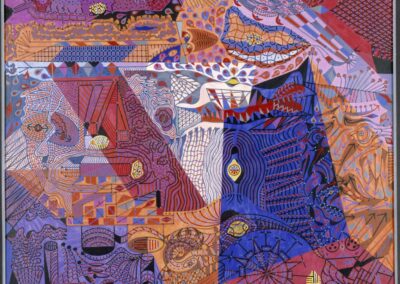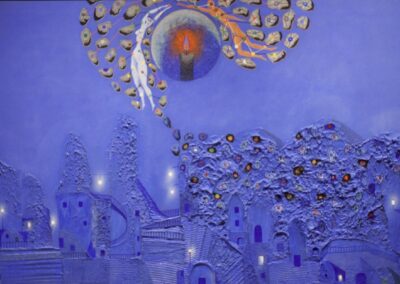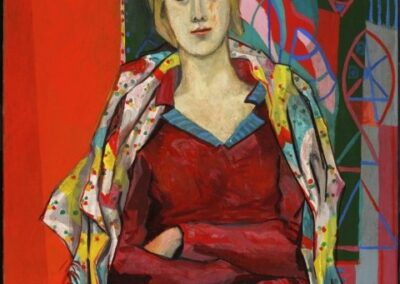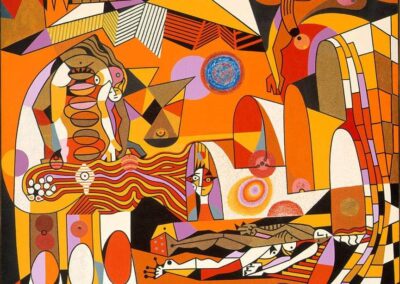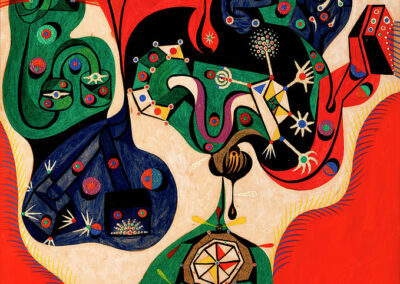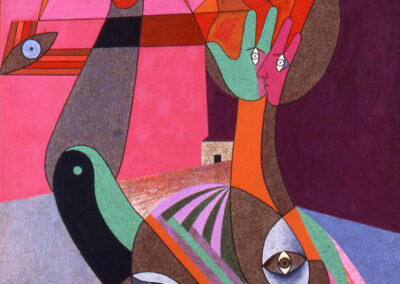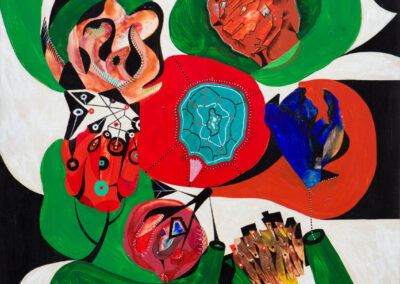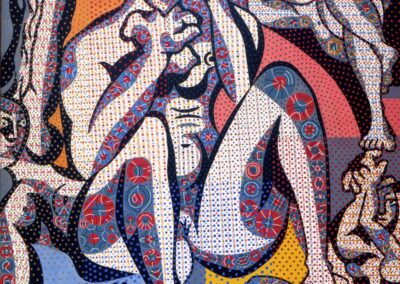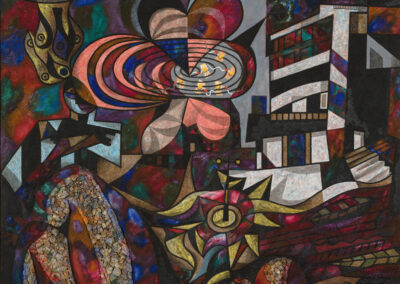Our latest Artist You Need To Know is Alfred Pellan (1906 – 1988), who was awarded both the Order of Canada and l’Ordre national du Québec. He was a significant painter, muralist, illustrator and costume designer in early twentieth century Canadian art, and an influence on later Quebec based art movements such as the Automatists. Born in Quebec City, he studied at the École des Beaux-Arts de Québec and lived in Europe for a time, which had a clear impact on his work and ideas. In speaking about his own work, Pellan declared that “the pictorial approach is essentially free. Painting is based on emotion and revelation, using unpredictable means of plastic and poetic invention to express itself.” Pellan was sometimes called “the wide awake dreamer” in admiration for how he melded surrealism and abstraction.
-

Chats et Poissons, 1968
-

Graffiti, 1973
-

Jardin Rouge, n.d.
-

Joie de vivre, 1975
-

Sous-terre, 1938
-

Montage sur Borduas, 1984
In 1920, Alfred Pellan enrolled at the École des Beaux-Arts de Québec where he thrived, winning a number of awards, including earning medals in painting, drawing, sculpture, sketching, anatomy and advertising. At the age of 17, he sold his first painting to the National Gallery in Ottawa.
Pellan’s academic success continued, as in 1926 Pellan “received the first fine arts scholarship in Quebec, which allowed him to spend several years in Paris and visit Venice. He studied at the Ecole nationale superieure des Beaux-Arts in Paris (1926-1930), where he received a first prize in painting in 1928 (Lucien Simon’s studio). When his scholarship ended he prolonged his stay in Paris till 1940 with the help of his father, often working alone while attending the Grande Chaumiere, Colarossi and Ranson art academies. He won first prize at the exhibition of mural art in 1935 in Paris and rubbed elbows with the most famous artists of the time, Picasso, Matisse, Derain, Dali. Traveling Europe, he became “permeated by the mainstream art of the era.” Returning to Quebec in 1936 hoping to be appointed professor at the Ecole des Beaux-Arts in his hometown, he was rejected by the jury, who found him too “modern”.” (from here)
-

A L'Echelle des Sourires, 1948
-

Abstraction, n.d.
-

Aerobatics d'Automne, 1974
-

Blossoming, c. 1950
-

Autumn, 1959
-

Baroquerie, 1975
When World War II began, Pellan returned to Montreal. He enjoyed some success with exhibitions, but many of his more contemporary works, influenced by Cubism and Surrealism were dismissed as “too avant-garde.” Pellan was a teacher at the École des Beaux-Arts in Montreal (1943 to 1952), where he actively encouraged more modern influences and ideas in artmaking, and playing an active hand in creating a more inclusive and experimental environment for the students.
Pellan expanded his oeuvre in the 1940s, and began illustrating books of verse and designing sets and costumes for theatrical productions. Also during this period, his interest in Surrealism became more and more dominant; his works became more intense and evocative, as well as incorporating elements of the erotic. Concurrently, his faith in art schools began to wane, and “in early 1948 he co-signed Prism of Eyes, a manifesto written by Jacques de Tonnancour advocating freedom of expression in art, speaking for a group that called for art free of any ideology.” (from the Canadian Art Group site)
He was able to return to Paris in 1952 with the support of the Royal Society of Canada. While there, an exhibition of nearly two hundred of Pellan’s works was mounted by the National Museum of Modern Art in Paris. Both the governments of Canada and France supported this exhibition, and Pellan was the first Canadian honoured in such a manner, in Paris.
-

Ultraviolet Lemons (Citrons ultra-violets), 1947
-

Blue Garden, ca. 1958
-

Girl with anemones, 1932
-

Under the Blue Sun, 1946
-

Alchimie, n.d.
-

Evasion, 1949
When Pellan returned to Quebec, he began teaching painting in 1957 as a professor at the Art Center of Sainte-Adele. Continuing to experiment in different media, Pellan received numerous commissions for murals of his work at this time. In 1984, Pellan was awarded the Paul-Émile-Borduas prize: this was a fitting accolade, as Borduas and the Automatists had stood on the shoulders of Pellan, and he laid the groundwork that they would both expand upon, and challenge, with their artworks.
Pellan succumbed to leukemia, after a decade long battle with the disease, which curbed his practice significantly in his final years. He died in Montreal in 1988 at 82 years of age, and is buried in the Parc du Souvenir in Auteuil, Laval, QC.
In 1995, Canada Post chose Pellan’s painting Blossoming (which is in the National Gallery of Canada) to feature as a stamp in their Masterpieces of Canadian art series: this was designed by Pierre-Yves Pelletier. Two of his works have been installed in the Canadian mission in Brazil, and were later relocated to the Lester B. Pearson Building in Ottawa, in the early 1970s, where they have been on display ever since. Maurice Gagnon, writing about Pellan’s work in 1943, enthusiastically declared “What enchantment is Pellan’s color! We are led from one joy to another: it shines, it bursts, it vibrates and resounds with intensity.”
Many more images of Pellan’s work can be seen here, at The Musée national des beaux-arts du Québec site.

